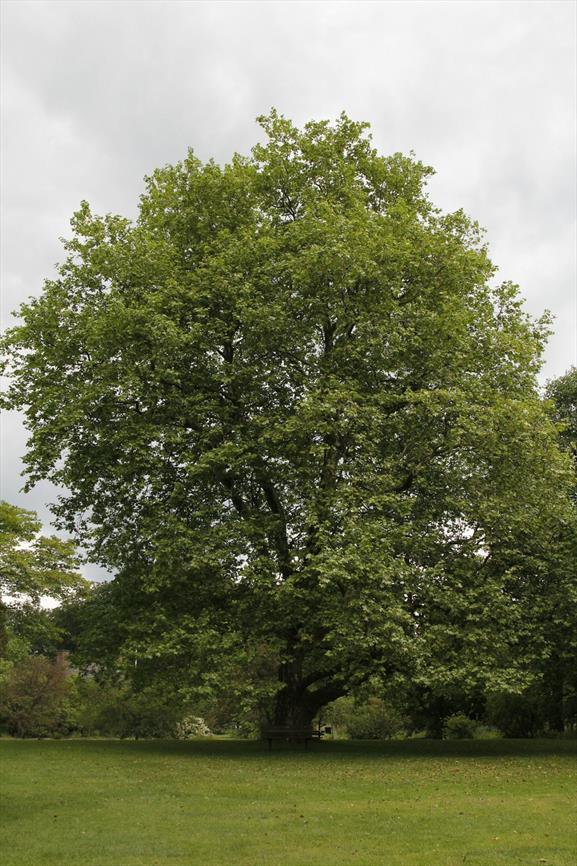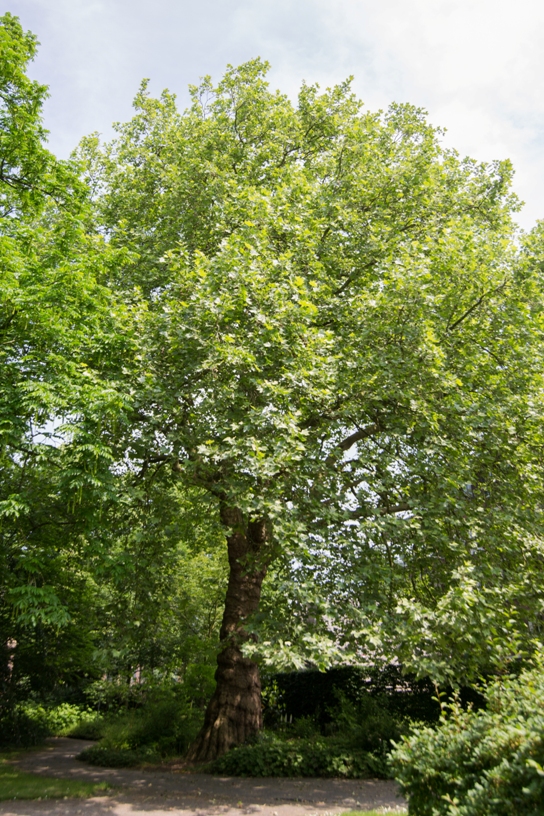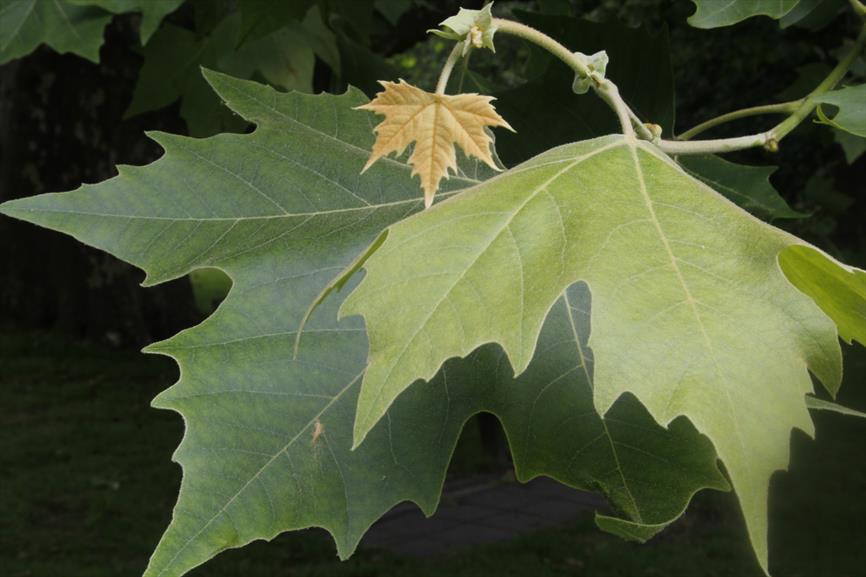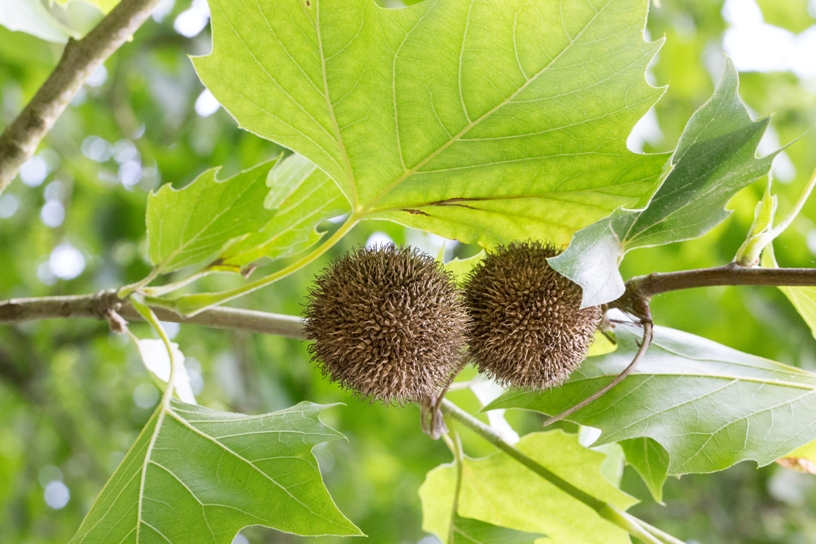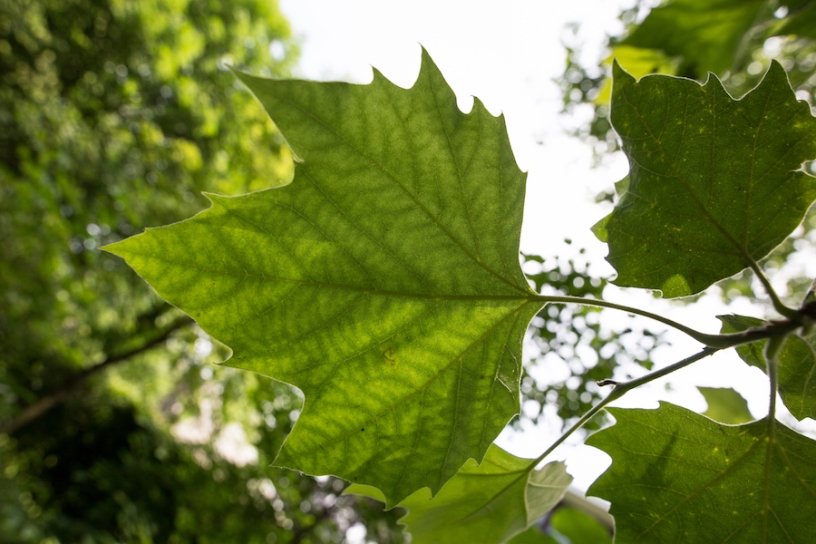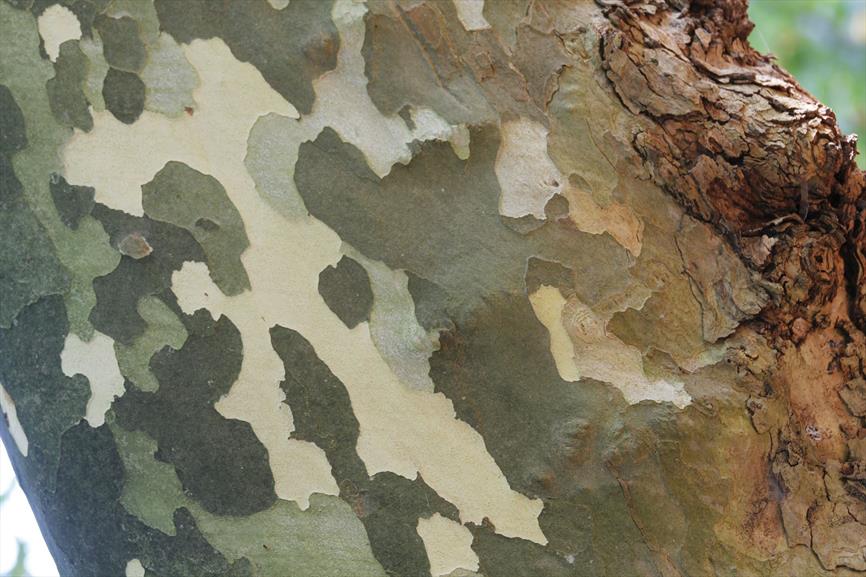London Plane
Platanus × hispanica
Plane-tree family (Platanaceae)
A highly camouflaged vacuum cleaner
The plane is a stately tree that has been planted along streets, in squares and on estates since Roman times. The large trees with palmate leaves and fruits in round spiky clusters can be identified by its flaking bark that, with different shades of brown and green, is reminiscent of the camouflage patterning on military uniform.
In cities the tree acts as a natural vacuum cleaner by filtering the air. Particulate matter (fine dust) are partially adsorbed by the tree, which is itself also highly resistant to air pollution. Moreover the plane is a favourite tree to grow in towns and cities because the open foliage casts a cooling shadow over our increasingly warmer streets. They can also be espaliered to form different shapes.
The plane produces fluffy seeds in balls of about 5 cm in diameter that are not released from the tree until after the winter.
Themes
Crown jewel in the Belmonte Arboretum.
Some people react with hay fever like symptoms to the pollen from the plane tree. In early spring when the leaf buds break the young shoots and leaves are covered in fine hairs that are sometimes shed en masse. These hairs can cause an allergic reaction of the skin. Moreover some people can suffer from hay fever like symptoms when cutting a plane. This can either be caused by contact with the leaf surface or from the tiny droplets of liquid released by the leaves during pruning.
The wood of the plane is quite heavy, but good to work and is used in the furniture industry. Left outside however it does not last. In World War One rifle butts were made of this wood when walnut, which was normally used, was no longer available.
Platanus x hispanica, the London plane, is a cross between Platanus orientalis from the Middle East and Platanus occidentalis from America. It is the first documented hybrid tree to come about in a garden. The first specimen was described in 1670 growing in the botanical garden of the University of Oxford, UK. Hybrid planes arose in various places, including Spain and the United States of America.
Details
| Description: | Tree, up to 30 m in height with palmate leaves and peeling bark. |
|---|---|
| Distributions: | Only found in cultivation. |
| Habitat: | In deciduous forests and planted in urban areas. |
| Year cycle: | Perennial (polycarpic decidous) |
| Hardiness: | -4 - 5 f (hardy - very cold winter) |
| Flowering period: | Mei |
| Flower color: | Green, red |
| Notes on flowers: | Female flowers are red and male flowers are green. |
| Fruiting period: | Augustus - februari |
| Fruit color: | Blue, yellow, green |
| Notes on fruits: | Behaarde nootjes in een bolvorm groengeelbeige. |
| At its best: | Mei, december |
